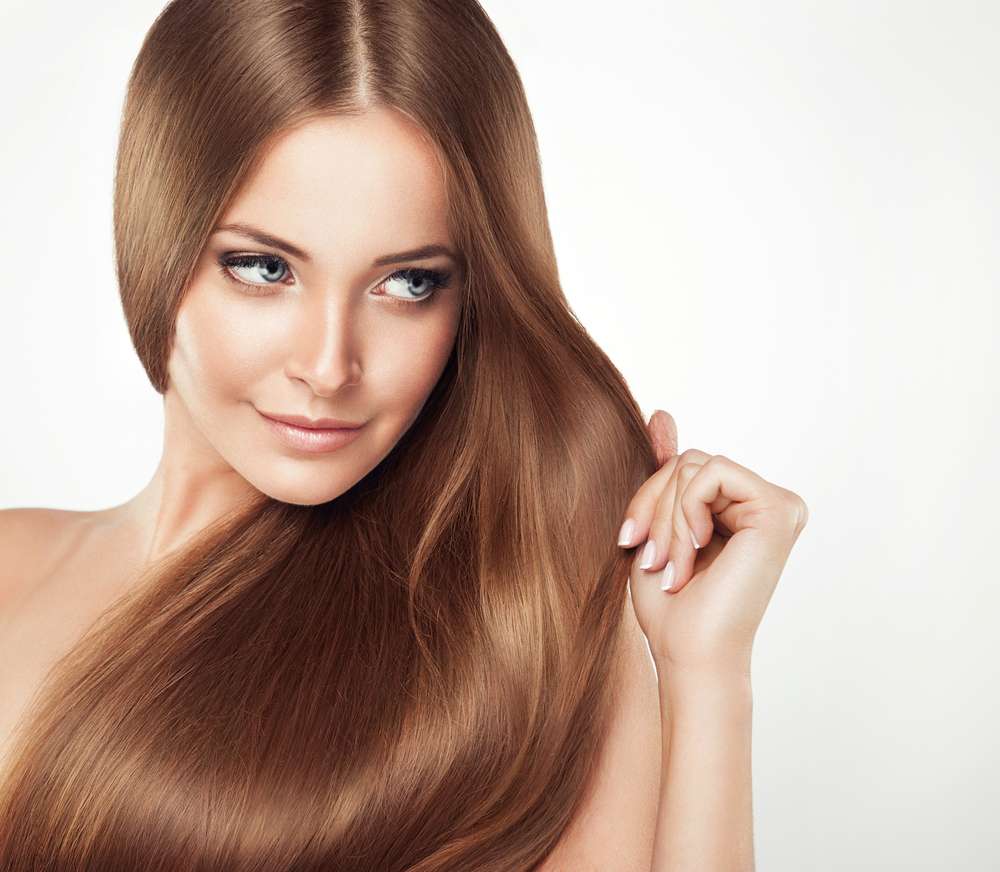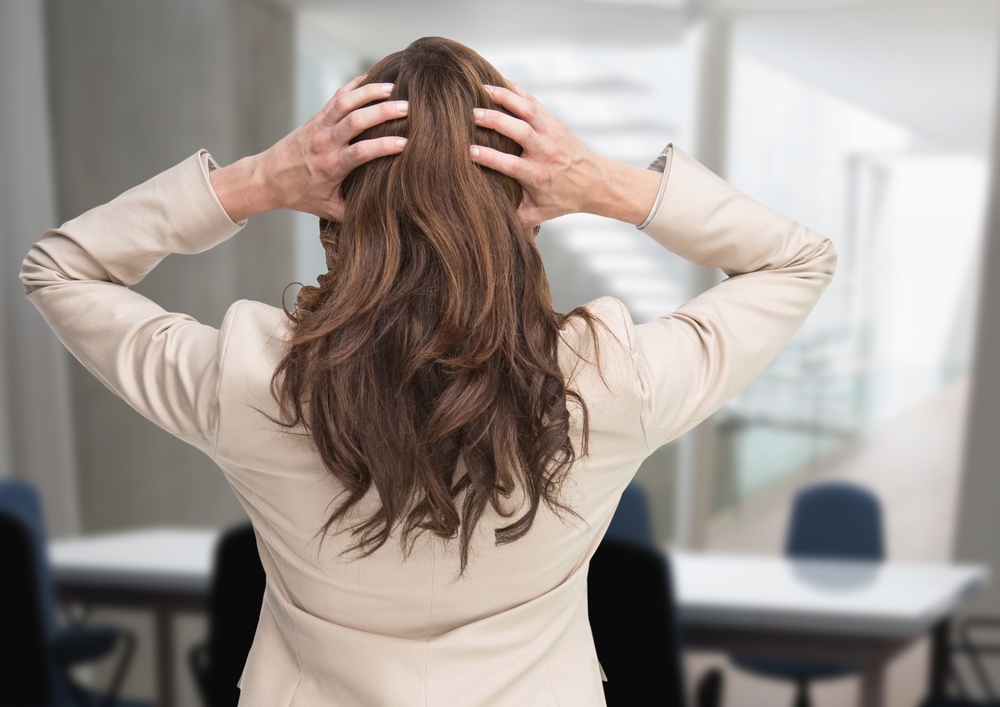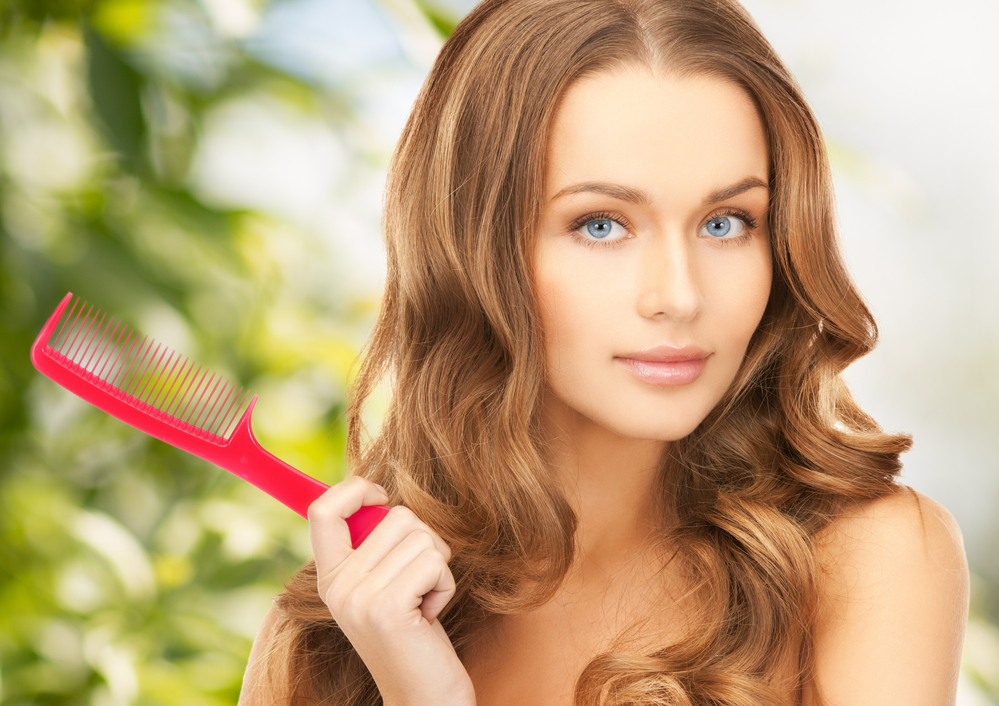Everything you need to know about hair

Hair is an asset of every woman and man, regardless of they are long or short, straight or curly. Shiny and healthy hair always catch an eye, to properly take care of them we need to know how are they built. This way it will be easier for you to get to know what they need.

Basic knowledge about hair – everything you need to know about hair
Hair is the product of the epidermis which has a threadlike form. They are placed in the hollows of the skin i.e. hair cuticles where the hair root is growing. Hair covers almost the whole human body, despite the inside of hands, soles of feet, bends of elbows and knees and places between skin and mucosa for example mouth.
The main building material of the hair is protein, specifically keratin, which is why a majority of hair care cosmetics contains it in their formula, to restore its loss. Keratin gives the strands elasticity and is responsible for their condition. We shouldn’t forget about other microelements that build our hair such as zinc, iron, potassium, phosphorus, copper, sulfur, manganese, calcium and water. Melanin is responsible for hair colour. With age with have less and less of this pigment and that is why our hair is becoming grey.
In the past hair used to be important for thermoregulation and protection, today its main function is aesthetic. We can express ourselves through hairstyling.
Fun fact: Hair grows only on the skin of mammals, in the case of animals it is hair. On the other hand, in humans, we speak of hair or fine fluff.
How is hair built?
Everything you need to know about hair – how is hair built? It is worth taking a closer look at the hair structure. The easiest way is to divide the hair into the outer part – the visible stem and the inner part – the root hidden under the epidermis.
The stem is a visible hair shaft, its elements in cross-section are:
- Cuticle – covers the hair shaft, resembles stacked tiles or a cone, its main purpose is protection, it is thin and colourless, it reflects light.
- Cortex – it is built with protein, keratin, surrounds the medulla, is responsible for stiffness, density, shape, gives hair colour.
- Medulla – also filled with protein, gives hair strength and elasticity.
The most important subcutaneous parts that we can distinguish in the longitudinal hair section are:
- Root – it is rounded and elongated upwards base of the hair that is embedded deep into the skin.
- Hair bulb – located in the lower part of the root, it surrounds the papilla from above, it contains a matrix in which metabolic processes of the cell take place. It is responsible for the initial production of keratin and hair growth.
- Hair papilla – connected to the blood vessels, it transports oxygen and nutrients necessary for hair growth.
- Sebaceous gland – responsible for the production of sebum.
- Arrector pili – the muscle that holds the hair in the skin.
It is a root that is the living part of the hair. Inside of it, all important processes crucial for proper development take place. It determines how fast hair grows and whether it will be strong and healthy. The stem is a finished product and is a dead part of the hair.

Physical properties of hair – everything you need to know about hair
- Durability – a single strand can be torn easily, but braided hair is as strong as a rope. The primary role of the hair was protection, therefore it is strong and resistant to external factors like UV radiation or mechanical damage. The cuticles of the hair closely overlap each other and constitute a barrier against bacteria, parasites and viruses. Hair is also chemically resistant, acidic preparations with a pH similar to the natural pH of the scalp, i.e. 5.5 are beneficial for hair. On the other hand, hair can be easily harmed by alkaline substances and oxidants.
- Elasticity – the hair is flexible in its structure and that is why we can give it shape during heat styling. However, at the same time it leads to water loss, with each subsequent treatment such as straightening, it becomes drier and loses its natural shape.
- The ability to absorb water – the hair structure consists of water, when the air outside is humid, it absorbs particles of water from the environment, lengthens or swells, which can result in a spoiled hairstyle.
- Electrically conductive – hair becomes static due to friction.
The hair growth cycle
The hair growth cycle is a looping process that is constantly repeating itself. There are from 20 to 30 cycles during human life. Depending on genetic predisposition, one such cycle may last even 6 years. We can divide it into 3 phases:
- Anagen – this is the main phase of hair growth, it lasts from 2 to 6 years. About 90% of the hair on the head is in this phase.
- Catagen – the transition phase when the hair follicle dies and is pushed upwards, lasts 1-2 weeks. About 1% of the hair is in this phase.
- Telogen – the phase of rest, the hair follicle is resting and no processes are taking place, hair falls out within 2-4 months. About 10% of the hair is in this phase, waiting for a stimulus from the organism to repeat the cycle.
The natural life cycle of the hair can be disrupted. Factors that negatively affect the cycle making it shorter are:
- serious sickness,
- chemotherapy,
- severe stress,
- hormonal changes,
- poisoning with chemicals,
- fever,
- bad hair care,
- a strict or poor diet.
As a result, new hair grows weaker and thinner. This is because the root growth period is disturbed and the new root is smaller and prone to falling out which leads to premature hair loss. It is part of everything you need to know about hair.

How fast does hair grow?
Everything you need to know about hair. It is assumed that on average hair grows 1 cm a month. Although there are lucky ones whose hair grows even 1.5 cm, it’s like winning a lottery. Daily hair growth is almost invisible and it is 0.35 mm. On the other hand, on the entire head of an adult human, there are from 100 to 150 thousand hairs. Falling out is also a normal stage, it is estimated that a maximum of 100 hairs falls out daily.
The most common hair diseases – everything you need to know about hair
A bad condition of the hair and scalp is a warning signal. You should consider whether this is not the beginning of developing a disease. The most common health problems of the hair and scalp are dandruff, mycosis of the scalp and hair, alopecia, purulent and parasitic diseases, greying and seborrheic dermatitis.

Telogen effluvium
Happens when a large amount of hair is going into the dormant phase at the same time. As a result, there are fewer strands and they become thinner each day. In a healthy human, about 10% of hair is dormant, in the case of telogen effluvium it is 25% to 50% on average.
Telogen effluvium can be caused by sudden, severe psychological stress, childbirth, fever, surgery under anaesthesia, serious loss of weight, lack of nutrients that are necessary for the hair root, such as iron and zinc, or hypervitaminosis A.
Appropriate treatment and care should bring results. So it is a part of hair diseases in everything you need to know about hair.
Androgenetic alopecia
Is a result of an impaired hair growth phase, the blood supply to the head is reduced, the blood vessels do not supply the proper amount of oxygen and nutrients to the hair bulb. The hair loss mechanism is related to the conversion of testosterone into dihydrotestosterone and an increase in the concentration of the enzyme 5-alpha-reductase. This substance harms the hair bulb. In subsequent cycles, hair grows thin and prone to falling out, with time the root eventually dies and does not repeat the cycle.
In both men and women, the basis of androgenetic alopecia is hormonal. This problem affects women after menopause, in men the first symptoms: receding hairline at the temples and the back of the head are noticeable at the age of 20-30.
Androgenetic alopecia is genetically determined, which means that not every man has this problem.
Alopecia areata
Is the result of a dying hair follicle. Large bald patches start appearing on the skin. Experts disagree as to the exact cause of this disease but point to genetics and autoimmune diseases. Alopecia areata mainly affects young people before the age of 30.
When traditional methods fail, it is best to go to a specialist, e.g. a dermatologist. Diseases can have a variety of hormonal, endocrine, digestive or immune origins. Any inflammation will show symptoms on our skin and hair.
Haircare
There is no doubt that hair is a mirror of the current condition of the organism. If the immune system is weakened after an illness, diet or stress, the reflection of this state is noticeable on the head. The deterioration of the condition of the strands is also favoured by hot styling, weather conditions, sun exposition in summer and UV radiation and wind, dry air in heated rooms during winter and even smog or cigarette smoke. Poor hair care can lead to mechanical and thermal damage, so it is worth eliminating simple mistakes.

The basis of care is proper hair washing
Rub the shampoo on your palms and start a gentle massage with your fingertips. Try to press your fingers against the skin and move slowly over the scalp in circular motions. It is worth spending a few minutes massaging the scalp because it will improve circulation and stimulate the hair follicles. This treatment on wet hair is a better choice than on dry ones because in the latter case the scalp will get greasy faster. There is no need to apply the shampoo to the ends of your hair, as it will run off by itself when rinsing. Of course, we do not rub the hair vigorously, as this may lead to cuticle rubbing.
Hair should be washed 2 – 3 times a week. Washing it too often can have the opposite effect from the expected, instead of fresh and clean hair – we will get one that becomes greasy faster. This is due to the washing detergents present in hair shampoos. SLS (Sodium Lauryl Sulfate) is the most common shampoo ingredient that dries out the scalp. The body’s natural protective reaction to dry skin is the production of sebum, which role is to protect and moisturize. We should follow a simple rule and wash our hair according to its needs. For the last rinse of hair, use lukewarm or even cold water, it will close the hair cuticles.
Balance is indisputably important in hair care
The scalp must have an appropriate pH of 5.5. Therefore, let’s not overdry or overload it with cosmetics. You can de-acidify your hair by rinsing it with water and a few tablespoons of vinegar or lemon – to restore the correct pH, in the case of the stem it is pH – 3.6

Haircare through nourishment
We should choose cosmetics with keratin and ceramides because they can go between the cuticles, making them smooth and closed. You also have to follow the rule: everything should be used in moderation. Too intensive application of conditioners can cause overloaded and greasy hair. Therefore, apply the cosmetic from the middle of the hair length or only to the ends, so as not to clog the pores on the head.
Proper combing of hair
Brush slowly, starting from the ends to break the knots and tangles, slowly moving upwards. You shouldn’t use force, tug or stretch the strands. Hair, of course, is flexible and can stretch. However, under the influence of tugging, they are torn off and such ends are then split and resemble a broom. When combing wet hair, choose a comb with a large tooth spacing or a natural bristle brush. Never choose a metal brush that will scratch the cuticles and damage the hair structure.

Regarding drying your hair
If possible, it would be good to give up the dryer. Blowing hot air opens the hair cuticles leaving them dull and leads to breakage. If we have to use the dryer, then we should choose the one with the diffuser and keep it at a distance of about 20 cm from the hair, drying it from root to end.
Hairstyling
If you have to style your hair while hot, it is most sensible to set the straightener or curling iron to a lower temperature and subject the strands to such treatments no more than 2-3 times a week. The safety limit for everyone should be 220°C. Above this temperature, the protective sheath of the hair will melt, because at 233°C the keratin burns and such a burnt strand cannot be restored. In the case of dyed hair, we should set the straightener to 190°C, and for very damaged hair to 150°C, so as not to worsen its condition.
See also: How to take care of hair to make it strong?

What do you have to remember about your hair?
In summary, when your hair falls out, you shouldn’t start panicking right away. It is a normal part of the hair life cycle. However, thanks to the right diet and supplements, we can extend this process, or even shorten the dormant phase and accelerate the growth of new ones. It all depends on how many nutrients - vitamins and minerals we provide to our hair. Many people forget about it and only focus on the visible part of their hair. Conditioners and shampoos work temporarily, and the strengthening should start from the inside and be focused on the hair bulb. Everything you need to know about hair is here.